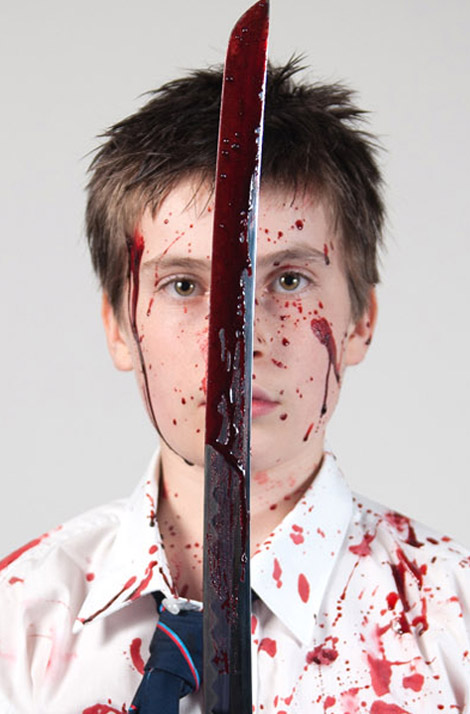Kids Killing Kids comes together seamlessly

Kids Killing Kids | Review
Meg Watson | Concrete Playground
22 Sep, 2013
Teenagers lay slain on the steaming streets of Manila as audiences surround the survivors, baying for blood. Some of the frenzied cries are rehearsed, others not so much — the lines between theatre and reality have been severed and everyone involved must decide for themselves whether it’s for better or worse.
Kids Killing Kids is an introspective show that tells this story. In 2011, four young Australian writers travelled to Manila to collaborate with local artists from the Sipat Lawin Ensemble on an adaptation of the famous novel Battle Royale. The story was to revolve around a class of teenagers held captive by a teacher and forced to murder one another until just one survives. The show attracted huge crowds as each performance birthed a cultish following. It received massive international media coverage, and suddenly people were asking questions of it: in this culture, at this time, in this place, was it all just fun and games?
Written and performed by the playwrights as a unique combination of documentary, lecture and narrative, Kids Killing Kids has some obvious tensions. To start with, you want to see the blood. You can’t help but feel desperate for the action and mayhem on those streets — the exhilaration of the experience. But instead, you are kept at a distance. Everything is methodical and sanitised. When there is blood, it is handled delicately in a glass jug with a lid — those on stage wear plastic ponchos and take the time to lay sheeting on the ground before a controlled usage. At one point there’s a slide projector, a metal pointer and an overhead projector. Not to shun one of the iconic devices of my public school education, but had anyone else forgotten these existed?
This is all so excellently deliberate though. Through each step of the story, the audience is positioned alongside them. We are polite tourists trying to respect the Filipino culture while being pushed around Manila’s gritty streets. We experience the success and the failures of the show as the writers explore their role and seek absolution from it. The retelling is so honest, precise and relatable, the performance can effortlessly springboard from violent civil war to the straight-up hilarity that is six-year-old street kids krumping to Lil Jon.
It would be easy for Kids Killing Kids to fail. The form is experimental, the story itself demands a lot of catch-up to fill you in on the background knowledge, and to a disinterested audience member it could come off as pretty egotistical — four writers telling you what a bang-up job they did on this thing a few years ago. Cool story, bro. But that’s just it, I don’t think you could be disinterested in the story that’s being told and it really does deserve the examination given to it.
For all this ambition, Kids Killing Kids comes together seamlessly. In just over an hour it addresses our fascination with violence, the problems with cross-cultural collaboration, an entire nation’s political history, and the role of theatre itself. Who would have thought such a beautifully surreal and thought-provoking story would involve little more than some milk crates, a few plastic blood packs, and an OHP?
